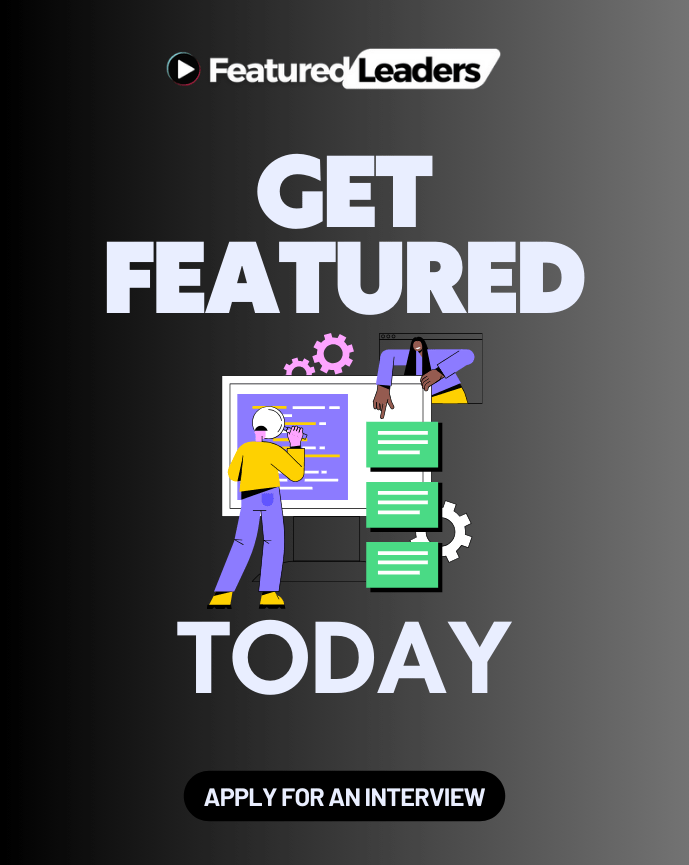This how-to guide shows a leader exactly how to align a leadership style to the moment so an organization, team, and business can thrive, not just survive.
Studies show there is no one-size-fits-all path. The best leaders match approach to context, team readiness, and stage of the business.
We combine proven frameworks—Situational and Adaptive leadership—with clear, practical strategies you can use today.
Expect step-by-step planning, tips on when to use each style, and guidance on leading adaptive change with transparent communication. You will learn how to decide, build trust, and measure impact so choices become a repeatable system.
Outcome: stronger ownership, better performance, and durable success across your business.
Key Takeaways
- Use context and team readiness to pick the right leadership approach.
- Blend Situational and Adaptive frameworks with practical actions.
- Communicate clearly during shocks to keep people aligned.
- Measure results and repeat a review-adjust cadence.
- The right style unlocks ownership and better performance.
Why Adapting Leadership Styles Matters Right Now
When markets swing and disruption hits, leaders who shift approach fast preserve momentum and morale.
Research shows that changing how you lead helps a business steer through a fast-moving environment. External shocks—natural disasters, supply chain breakdowns, or pandemics—often flip priorities overnight.
Practical impacts:
- Adjusting approach keeps projects moving and avoids stalled execution.
- Clear, consistent communication builds trust so employees and the team know what to expect.
- Matching how you lead to the company’s stage speeds decisions and reduces friction.
GBS Corporate Training advises letting situations unfold enough to diagnose the problem, then act with transparency. HBR’s five stages (startup to maturity) suggest survival favors Selling/Coaching, while maturity benefits from Participating and Collaborating.
Bottom line: scan the environment, name the challenge, and make a timely shift. Rapid but thoughtful change beats rigid consistency when time is short and stakes are high.
How to Start Adapting Leadership Styles for Organizational Success
Begin with a clear scan of the situation so your approach aligns with what the business actually needs.
Recognize the need and align your mindset. Name what changed in the environment and decide what to keep and what to change. This mental reset helps a leader act with purpose instead of reacting under stress.
Recognize the need to change and align your mindset
Run a quick diagnosis: what risks, opportunities, or capacity gaps does the team face? Share that view with management and invite input to reduce misunderstanding.
Create a step-by-step plan tied to business goals
Write a short, ordered plan that links each action to specific goals. Revisit the business plan and add phases, owners, and timelines so efforts stay measurable.
Set realistic goals and clarify roles to reduce friction
Set team and employee goals based on current capacity. Define who decides, who executes, who consults, and who’s informed.
“Small, time-bound wins build momentum faster than a vague promise of change.”
- Build daily or weekly communication cadences to surface risks fast.
- Do a quick self-assessment of your leadership style and ask a peer for feedback.
- Create simple checklists and give people the tools and authority to remove blockers.
Action tip: Start with one clear step and one measurable goal this week. That order keeps momentum and preserves quality as the team adjusts.
Using the Situational Leadership Model to Match Style to Context
Match your behavior to the situation by using a practical model that links tasks, people, and outcomes. This approach helps leaders pick a clear style that fits the team’s current strengths and the business need.
Style 1 — Telling / Directing: Use this when speed and clarity matter. It works best in crises, during short training bursts, or when a task must move immediately. Simplify steps and give specific instructions to remove ambiguity.
Style 2 — Selling / Coaching
This style builds buy-in and skills. It fits survival-stage growth when a company needs performance plus learning. Explain the why, coach through mistakes, and raise competence while keeping motivation high.
Style 3 — Participating / Collaborating
Choose this when employees have skills but lack confidence. Facilitate conversations, surface ideas, and boost engagement. Collaboration often unlocks innovation during maturity and improves ownership.
Style 4 — Delegating / Empowering
Ideal for mature teams that have proven reliability. Set outcomes, trust people to decide, and free the leader to focus on strategy. Delegation multiplies leader capacity and grows team autonomy.
- Scan readiness: check skills, motivation, and confidence before you act.
- Flex as needed: use coaching in survival, shift to collaboration for growth, and return to directing during urgent spikes.
- Practical nudges: simplify tasks when directing, explain purpose when coaching, facilitate when collaborating, and step back when delegating.
“Select the behavior that closes the gap between current capability and the task at hand.”
Applying Adaptive Leadership to Navigate Complex Change
Untangling big challenges starts with a straightforward diagnosis of what matters most in your organization.

Diagnose what’s precious vs. expendable
Begin by naming core values, key relationships, and unique differentiators that must stay. Then list processes, tools, and habits that slow work or mask problems.
Encourage experimentation and smart risks
Make it safe for people to test new ideas with small bets. Align experiments to strategy and core values so risks teach the team without endangering the business.
Practice disciplined assessment with clear measures
Define success indicators before you start. Instrument experiments, set short review cycles, and use the data to scale what works or stop what doesn’t.
Lead with integrity, emotional intelligence, and justice
Model behavior that builds trust. Invite diverse voices, own outcomes, and treat learning as a shared obligation to strengthen relationships across the organization.
- Tip: Distinguish adaptive challenges from technical fixes and mobilize cross-functional learning when root causes are unclear.
- Tip: Show visible wins to keep momentum while retiring expendable work.
| Focus | Action | Measure | Who |
|---|---|---|---|
| Precious assets | Document and protect values, key customers, and core processes | Retention rate; customer feedback | Senior leaders |
| Smart experiments | Run time-boxed pilots tied to strategy | Experiment ROI; learning logs | Cross-functional teams |
| Assessment | Define KPIs and review cadence | Metric trends; decision logs | Program owners |
“When actions match values, trust grows and change sticks.”
Communication, Decisions, and Trust: Practical Leadership Actions
Good communication and visible decisions make change manageable. This section shows concrete actions a leader can take to keep a team steady, informed, and accountable.
Keep communication open and transparent during change
Set a predictable rhythm with short updates that explain decisions, tradeoffs, and next steps. Clear timing reduces rumors and keeps employees loyal.
Use simple channels: a weekly snapshot, a brief Q&A, and a public decision log. Build relationships through active listening so management can course-correct early.
Delegate effectively and empower key role models
Delegate with intent: assign outcomes, define the role and authority, and equip people with the right tools. Agree on interim check-ins to prevent surprises.
Identify respected employees who can model desired behavior. When role models amplify standards, adoption speeds up and trust grows.
| Action | Why it matters | Owner |
|---|---|---|
| Predictable updates | Clarifies decisions and next steps | Program manager |
| Delegation with checks | Keeps work moving and prevents rework | Team leads |
| Role model activation | Drives peer adoption and culture | People ops |
“Make decisions visible and close feedback loops quickly to turn communication into momentum.”
From Plan to Action: Tools, Skills, and Cadence for Sustainable Change
Create a dependable rhythm that turns decisions into visible, measurable actions. Use a simple decision routine that brings the team together at the right time. That routine should lean on each person’s strengths to stress-test options before committing.
Run decision-making with the team
Design a short, repeatable meeting that clarifies who decides and when. Use templates and checklists so discussions produce clear next steps.
Address issues early and learn fast
Set fast feedback loops and escalation paths. Treat setbacks as learning opportunities and capture insights in brief retros so the team improves at every level.
Build accountability and keep momentum
Name owners, set deadlines, and schedule follow-ups that verify outcomes, not just activity. Equip people with the right tools and leadership skills—dashboards, templates, and authority—so actions move from plan to delivery.
- Make one step visible at a time to avoid overload.
- Balance speed and quality by agreeing decision rights up front.
- Encourage the team to surface continuous opportunities for improvement.
“Small, predictable steps keep teams confident and progress measurable.”
Measure, Review, and Adapt Over Time
Set clear measures early so every shift has data to guide the next move. Make measurement part of how the company decides, not an afterthought. Discipline in assessment helps teams spot trends and flag issues fast.
Track people, performance, and process metrics that matter
Keep the metric set small and focused. Choose one or two KPIs for people (engagement, turnover), performance (output, quality), and process (cycle time, defects).
Quality beats quantity: fewer measures mean faster insight and clearer action.
Hold regular reviews; adapt style as your business stage shifts
Run time-boxed reviews in a fixed order: goals, outcomes, insights, issues, next actions.
Reassess the leader’s style mix as the business moves through startup, survival, growth, take-off, and maturity. Outsource routine reporting where it saves time so the team focuses on decisions.
- Flag issues quickly and quantify impact to prioritize fixes.
- Document choices: note what to keep, change, or stop and share the rationale.
- Close the loop: assign owners and schedule the next review to embed continuous improvement.
| Area | Metric example | Review cadence | Owner |
|---|---|---|---|
| People | Engagement score; turnover rate | Monthly | People ops |
| Performance | Delivery rate; quality defects | Weekly | Team leads |
| Process | Cycle time; automated reports | Bi-weekly | Operations |
“When measurement guides action, change stays aligned with outcomes.”
Conclusion
Good endings focus on one truth: matching behavior to context creates durable momentum across teams and business stages. Blend Situational (Hersey) and Adaptive (Heifetz & Linsky) approaches to choose the right styles and measure impact.
Use a simple playbook: diagnose the need, pick fit-for-purpose strategies, communicate clearly, assign accountability, and review on cadence. Small, steady changes in behaviors at every level compound into real growth.
Practical nudge: pick one decision this week, match it to the right style, then track results and iterate. When a leader keeps the loop of evidence, reflection, and action tight, people and businesses win.
FAQ
Why is adapting my management approach important right now?
Companies face rapid change from market shifts, remote work, and technology. Shifting your management approach helps you meet evolving goals, keep employees engaged, and respond faster to challenges while protecting core values.
How do I know when it’s time to change my approach?
Look for signs like declining morale, missed targets, slow decision-making, or frequent turnover. Feedback from employees, performance metrics, and missed opportunities also signal the need to adjust how you lead.
What’s the first step to changing how I lead?
Start by recognizing the need for change and aligning your mindset with business goals. Conduct a simple gap analysis: where you are versus where you want to be, then involve key team members to build commitment.
How can I create a practical plan for shifting approaches?
Develop a step-by-step plan tied to measurable business objectives. Set clear roles, timelines, and small milestones. Use short experiments to validate methods before wider rollout.
Which model helps match style to context?
The Situational Leadership model is useful. It guides leaders to choose directing, coaching, collaborating, or delegating based on team capability and task complexity.
When should I use a directing approach?
Use directing in crises, for urgent tasks, or when team members need specific instruction and hands-on guidance to meet short-term goals.
When is coaching the right choice?
Coaching works well during growth phases or skill development. It combines guidance with support, helping people build competency while staying motivated.
How do I foster collaboration and innovation?
Use a participating style: invite input, create cross-functional teams, and run structured brainstorming. Give credit, build psychological safety, and keep experiments focused on learning.
When should I delegate more to my team?
Delegate when teams are mature and trustworthy. Clear goals, decision rights, and accountability let leaders focus on strategy while empowering employees to act.
How do I balance experimentation with protecting core values?
Diagnose what’s precious versus expendable. Allow smart risks in non-core areas, define guardrails, and ensure experiments align with your company’s mission and compliance needs.
What practical habits improve decision-making and trust?
Keep communication open and transparent, involve stakeholders in decisions, and delegate to capable role models. Consistent follow-up and visible accountability build credibility.
How should I measure progress after changing my approach?
Track people, performance, and process metrics that matter—engagement scores, delivery timelines, quality indicators. Hold regular reviews and adjust tactics based on data and feedback.
What tools help maintain a sustainable cadence for change?
Use simple project dashboards, regular standups, decision logs, and retrospective sessions. These tools keep momentum, surface issues early, and turn setbacks into learning.
How do I handle resistance from employees or managers?
Listen to concerns, clarify benefits, and involve resistors in planning. Offer training, small wins, and show quick improvements to shift attitudes over time.
What leadership skills should I develop first?
Prioritize communication, emotional intelligence, delegation, and coaching. These skills directly influence engagement, performance, and the ability to scale change.
How long does it take to see results after changing styles?
Some improvements—like clearer communication—appear in weeks. Cultural shifts and sustained performance gains usually need several months, with continuous measurement and adaptation.
Can small businesses benefit from these approaches?
Yes. Smaller teams can test changes faster and scale successful practices more quickly. Focus on clarity, role alignment, and a learning mindset to drive growth without heavy bureaucracy.
How do I keep accountability without micromanaging?
Set clear outcomes, assign owners, agree on deadlines, and schedule brief check-ins. Use data to guide conversations rather than daily oversight, and reward autonomy with responsibility.






